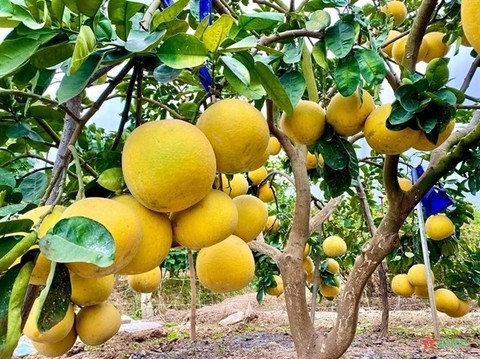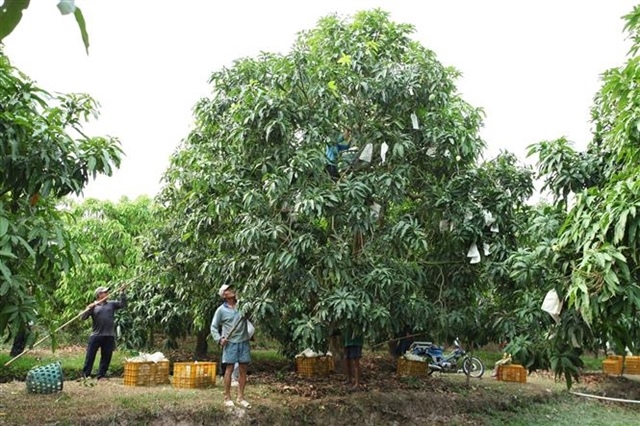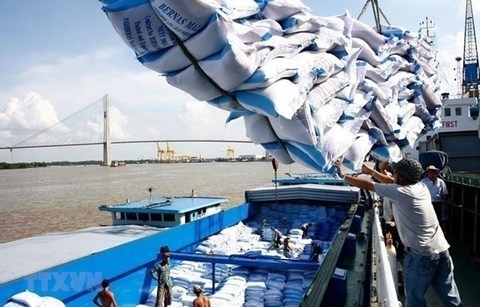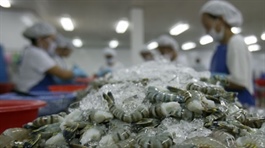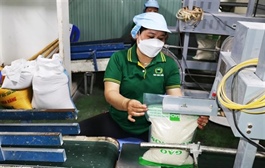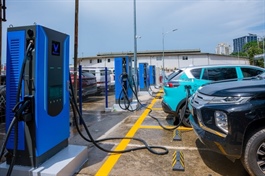Durian exports resume smoothly following temporary testing bottlenecks
Durian exports resume smoothly following temporary testing bottlenecks
Việt Nam currently has 24 laboratories recognised by China’s General Administration of Customs (GACC) for durian testing, with a combined capacity of around 3,200 samples per day, sufficient to meet current demand.
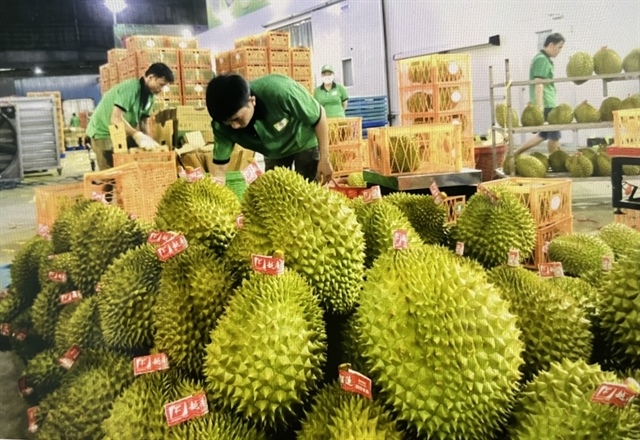
Workers prepare durian for shipment to China. — VNA/VNS Photos |
Việt Nam’s durian exports have returned to normal after a short-lived disruption caused by laboratory testing bottlenecks, restoring smooth customs clearance and consumption for producers and exporters, particularly in the Central Highlands as the durian season ends.
Earlier in October, congestion was reported in several key durian-growing provinces, including Đắk Lắk, after multiple testing laboratories temporarily suspended operations for maintenance or capacity re-evaluation.
The pause prevented exporters from completing mandatory analyses for Cadmium — a heavy metal that can accumulate in soil — and Yellow O, a dye banned from agricultural use. Both indicators are essential for obtaining export certificates to China.
The testing delays briefly disrupted customs procedures and sparked concern among farmers and exporters. In response, on October 24, Deputy Minister of Agriculture and Environment Hoàng Trung convened an urgent meeting with relevant agencies, instructing facilities to review operations, ensure transparency in testing capacity and maintain alignment with Chinese standards.
He emphasised that testing must be conducted quickly and accurately to avoid discrepancies that could lead to goods being rejected.
According to Huỳnh Tấn Đạt, Director General of the ministry's Plant Production and Protection Department, Việt Nam currently has 24 laboratories recognised by China’s General Administration of Customs (GACC) for durian testing, with a combined capacity of around 3,200 samples per day — sufficient to meet export demand.
Following a week of intensive coordination and oversight, testing operations have fully resumed, laboratories have extended working hours and customs clearance is now proceeding at normal pace.
“Our goal is to ensure that no shipments are interrupted due to testing or technical procedures,” Đạt said.
Durian exports at major border gates have stabilised, with 300 to 400 trucks clearing customs daily — including 200 to 250 at Lạng Sơn, 100 to 150 at Lào Cai, and around 50 at Móng Cái.
Đạt added that domestic durian output was declining as the harvest season nears completion and urged businesses and authorities to maintain market stability, avoid panic and work closely with relevant agencies to address any emerging issues.
To sustain export efficiency, the Ministry of Agriculture and Environment has directed departments to reassess laboratory capacity, deploy expert support to localities and mobilise qualified testing facilities to handle remaining sample analyses.
These measures aim to protect export continuity and safeguard production across roughly 150,000 hectares of durian plantations, which are expected to yield more than 1.5 million tonnes in 2025.
Harvest nears completion in Đắk Lắk
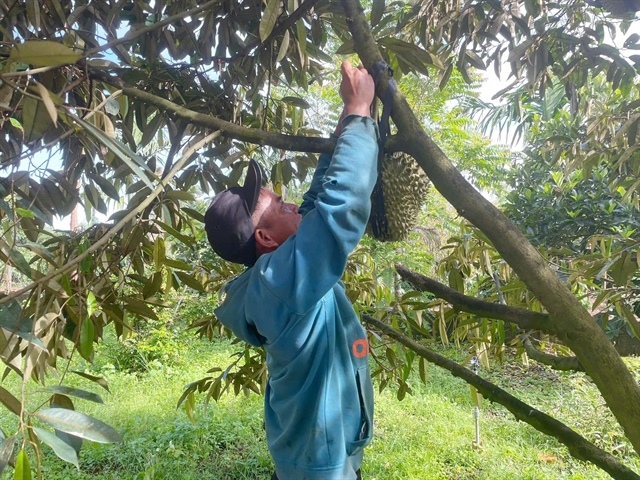
Workers prepare durian for shipment to China. — VNA/VNS Photos |
In Đắk Lắk Province, Việt Nam’s largest durian-growing area, harvesting and consumption activities have basically concluded, according to Đặng Thị Thúy, Deputy Director of the provincial Department of Agriculture and Environment.
The province currently cultivates nearly 45,000 hectares of durian, with more than 26,000 hectares harvested. The 2025 output is projected at about 390,000 tonnes, up roughly 30,000 tonnes from last year. As of the end of October, only about 10 per cent of the crop remained unharvested, equivalent to 30,000–40,000 tonnes, mainly in the communes of Ea Toh, Dliê Ya, Ea Tân and Ea Bá.
Farm-gate prices for durian are currently VNĐ60,000–70,000 per kilo, slightly lower than last year but still providing growers with strong profits. Although some businesses experienced short-term difficulties during the testing process, purchasing and export activities have since stabilised.
Đắk Lắk now has 269 registered growing area codes and 40 packaging facilities officially certified for export to China. Among them, 224 areas have authorised enterprises to handle exports with an estimated output of over 180,000 tonnes, while the remaining 45 areas export directly.
When the temporary suspension of Cadmium and Yellow O testing certificates occurred, the Đắk Lắk Department of Agriculture and Environment promptly reported the issue to the provincial People’s Committee and the Ministry of Agriculture and Environment, recommending that testing centres accelerate sample processing to avoid any disruption to export operations.
Thúy said her department was working closely with units under the Ministry of Agriculture and Environment, the Đắk Lắk Durian Association and exporting enterprises to address remaining challenges.
She said that the coordinated effort aimed to ensure full consumption of the end-of-season crop, stabilise the market and uphold the reputation of local agricultural products in both domestic and international markets.
From the business perspective, Lê Anh Trung, chairman of the Đắk Lắk Durian Association, said that since mid-October, testing for the Cadmium and Yellow O indicators had faced congestion as most enterprises concentrated their samples at only two qualified testing centres. This led to overload and delayed results.
However, Trung said that the issue was effectively resolved within a week after the Ministry of Agriculture and Environment convened an urgent meeting and directed relevant units to take corrective action.
"The testing laboratories have been working continuously to deliver timely results, allowing businesses to resume purchasing and exporting the remaining output,” he said.
Looking ahead, his association would continue to coordinate with the provincial People’s Committee and the Department of Agriculture and Environment to implement the 2026 plan for developing a sustainable durian production and consumption chain. The province was also expected to host a conference at the end of November to discuss long-term strategies for the industry’s development.
Statistics from the Vietnam Fruit and Vegetable Association revealed that with October’s figures included, durian exports in the first ten months of 2025 reached an estimated US$3.2 billion, equivalent to the total annual revenue in 2024.
- 07:28 05/11/2025


